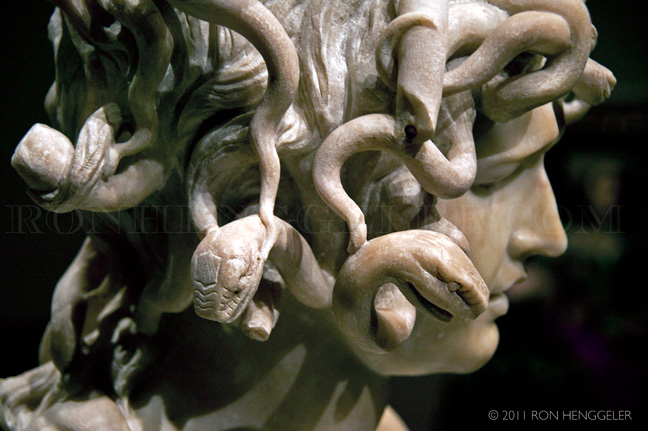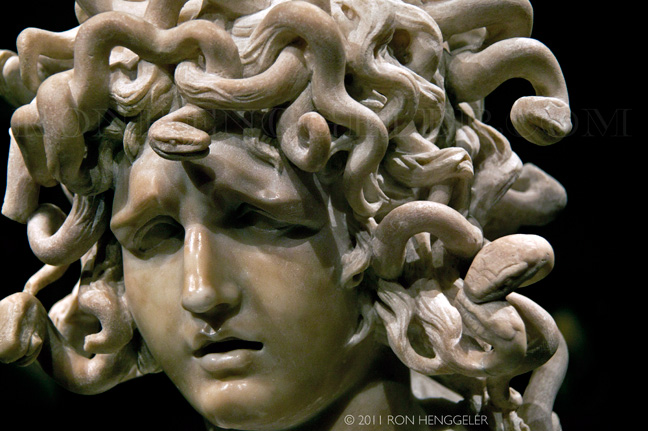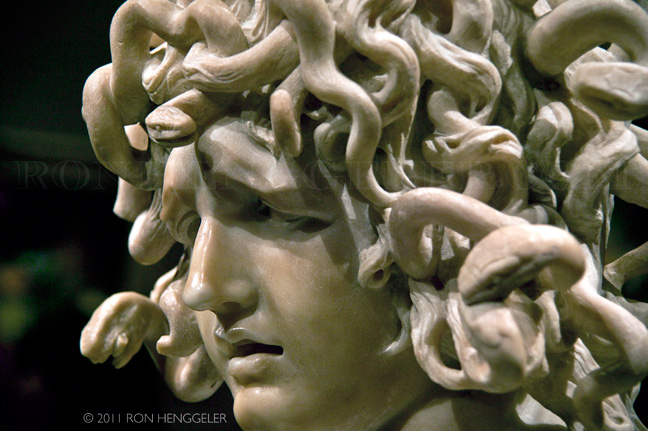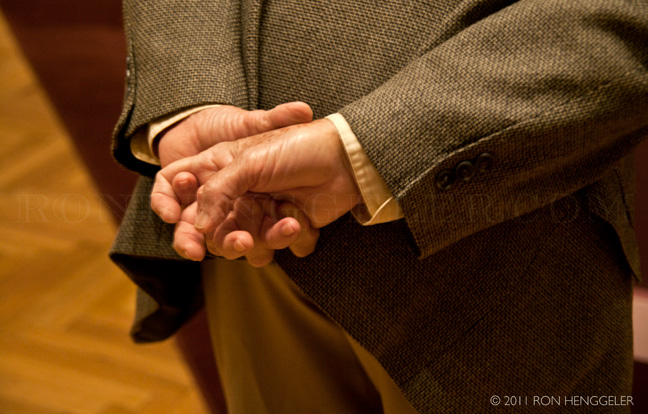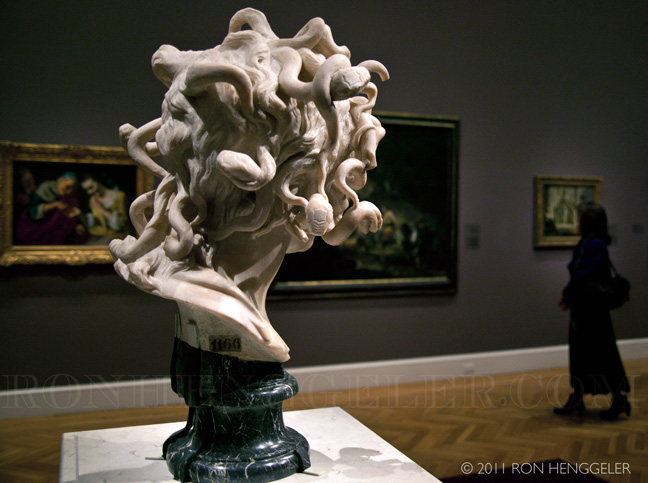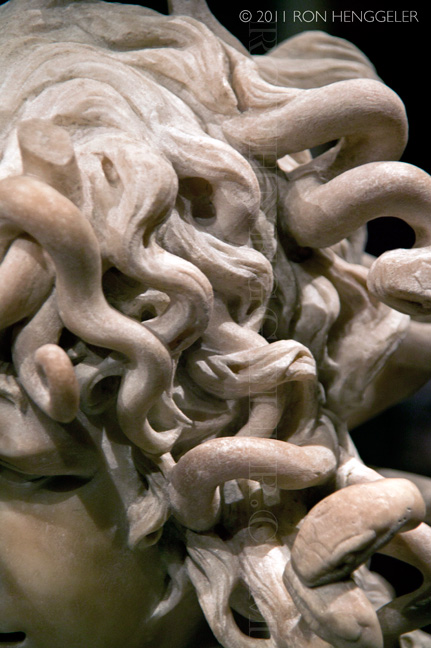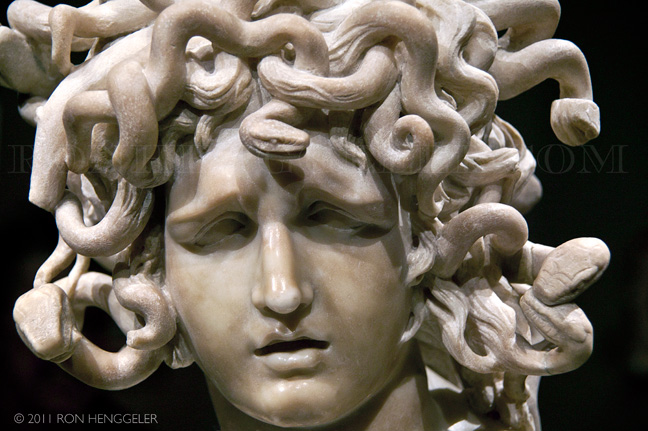RON HENGGELER |
December 18, 2011
Medusa by the Italian sculptor Gianlorenzo Bernini at the Legion of Honor
"Perseus replied: 'Since the story you ask for is one worth telling, listen and I shall explain. Medusa was once renowned for her loveliness, and roused jealous hopes in the hearts of many suitors. Of all the beauties she possessed, none was more striking than her lovely hair. I have met someone who claimed to have seen her in those days. But, so they say, the lord of the sea robbed her of her virginity in the temple of Minerva. Jove's daughter turned her back, hiding her modest face behind her aegis: and to punish the Gorgon for her deed, she changed her hair into revolting snakes. To this day, in order to terrify her enemies and numb them with fear, the goddess wears as a breastplate the snakes that were her own creation.'"
Ovid, Metamorphoses (IV.793ff)
San Francisco City Hall flood-fit green and red for the Christmas Season |
December dawn in San Francisco seen from my window |
The towers of the Golden Gate Bridge from Fulton Street at 18th Avenue |
Medusa is a marble sculpture of the eponymous character from the classical myth. It was executed by the Italian sculptor Gianlorenzo Bernini. Its precise date of creation is unknown, but it is likely to have been executed in the 1630s. It was first documented in 1731 when presented to the Palazzo dei Conservatori in Rome, and is now part of the collections of the Capitoline Museums. |
The portrait draws on the myth of Medusa, the snake haired woman whose gaze could turn onlookers to stone. Unlike other depictions of the Medusa, such as Benevenuto Cellini’s Perseus and Medusa, the Medusa is not portrayed as a vanquished figure, her head severed from her body but as a living monster. Bernini’s decision to create a marble sculpture may be some kind of visual pun on the myth - creating a stone version of a living creature that could turn men to stone. |
Nothing is known about its creation, and parts of the sculpture’s execution undermine Bernini’s authorship of the sculpture, most notable the heavy, exaggerated eyebrows and the rough treatment of the snakes. Yet the sensual fleshy quality of the cheeks and lip, the polished precision of the face, the tormented face of the Medusa and lively intelligence behind the literary concept and its unusual treatment point to the work of Bernini. |
The fingers of a museum-goer that mimic the tresses of Medusa |
Bernini's Medusa Believed to date from around 1638 to 1648, this extraordinary work takes its subject from classical mythology, as cited in Ovid’s Metamorphoses. It shows the beautiful Medusa, one of the Gorgon sisters, caught in the terrible process of transformation into a monster. The Medusa will be displayed exclusively in the U.S. at the Legion of Honor in the museum’s Baroque gallery 6, where it can be seen in context with the Museums’ great collections of paintings and sculpture from the era of Bernini. |
A Baroque masterpiece, the Medusa (c. 1638-1648) by Gian Lorenzo Bernini is situated against a wall in the Sala delle Oche (Hall of the Geese, from the two bronze ducks that reside there. It is a placement that does not allow many other perspectives. The pictures below were taken when the Medusa was on exclusive loan to the Legion of Honor in San Francisco. |
The bust of Medusa is by Gian Lorenzo Bernini probably was sculpted in the period 1638-1648 and is in the Palazzo dei Conservatori (Rome), where it has been displayed in the Hall of the Geese (so-named from the two bronze ducks that reside there) since 1734. |
Unlike most depictions of the Gorgon, Bernini presents Medusa at the moment she perceives herself in an imaginary mirror and realizes that she is being transformed. Her anguish at the metamorphosis is obvious as the tresses of her beautiful hair turn to writhing serpents. |
Newsletters Index: 2015, 2014, 2013, 2012, 2011, 2010, 2009, 2008, 2007, 2006
Photography Index | Graphics Index | History Index
Home | Gallery | About Me | Links | Contact
© 2015 All rights reserved
The images are not in the public domain. They are the sole property of the
artist and may not be reproduced on the Internet, sold, altered, enhanced,
modified by artificial, digital or computer imaging or in any other form
without the express written permission of the artist. Non-watermarked copies of photographs on this site can be purchased by contacting Ron.



